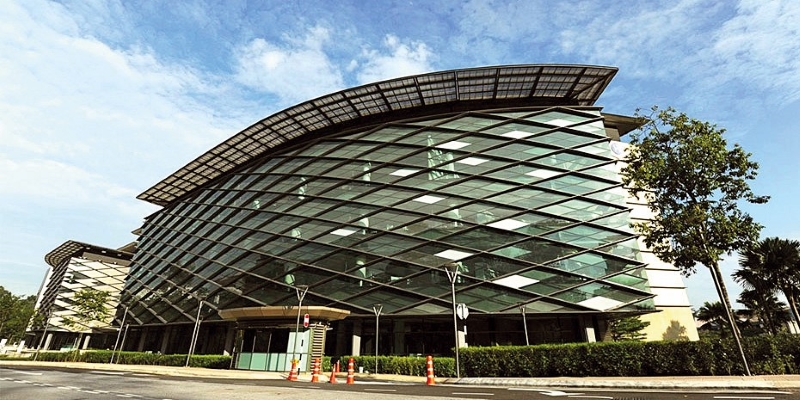
Adrianta: We want this festival to capture KL’s essence, which has evolved over time, yet it tells a compelling story of adaptation and transformation (Photo: Adrianta Aziz)
Options: What inspired VibesKL: Vibrancy and Diversity?
Adrianta Aziz: Kuala Lumpur, of course! Our city is culturally diverse, has dynamic energy and harmonises tradition with modernity. We want this festival to capture KL’s essence, which has evolved over time, yet it tells a compelling story of adaptation and transformation. From a tin-mining town to vibrant metropolis, its architectural landscape mirrors the diverse life stories of its inhabitants. There are colonial influences, towering skyscrapers, humble shophouses … each represents a chapter in our city’s narrative.
We at PAM also want to emphasise the importance of collaboration among various creative disciplines. By bringing together architects, artists, photographers, graphic designers and illustrators, VibesKL creates a platform for diverse voices to express their interpretations of the city’s spirit. Each contributor offers a unique perspective, highlighting how architecture intersects with other forms of art and design.
Yes, we can see this when PAM opened the festival with a live painting-performance by Dr Jalaini Abu Hassan.
The idea stemmed from our deep desire to create a meaningful intersection between architecture and art, particularly as we celebrate World Architecture Day 2024 (Oct 7). We aimed to highlight how both disciplines are not only intertwined but also essential to shaping our environment and culture. Dr Jai’s approach to art is notably process-oriented, emphasising exploration and engagement with themes rooted in Malaysian culture. His work often reflects the rich tapestry of our society, capturing the essence of diversity, history and identity, and serves as a metaphor for the architectural process as both require a deep understanding of context, materials and the emotional response the end result evokes in people.
What are some of your favourite buildings in the city?
The Petronas Twin Towers, due to their iconic status and global recognition as a symbol of Malaysia’s modernisation and aspirations. Their innovative design, with Islamic geometrical motifs, seamlessly merges tradition with futuristic architecture, while remaining a centrepiece of KL’s skyline. Masjid Negara is another, for its graceful and modernist approach to Islamic architecture. Then there’s the old Kuala Lumpur Railway Station, which is a masterpiece of colonial architecture. Lastly, the rising Merdeka 118 Tower, soon to be Southeast Asia’s tallest structure, excites me for its sheer engineering feat and the way it represents the country’s growth, innovation and ambition in the global architectural scene. Its design, inspired by the Malaysian spirit of unity, makes it a future landmark.
How is PAM marking World Architecture Day this year?
Our focus this year is centred on sustainable urban development and the critical role architecture must play in addressing global environmental concerns. There are public lectures and talks by renowned Malaysian as well as foreign architects, exhibitions, artistic collaborations and more. We also want to address the challenges of climate change, urbanisation and the protection of cultural heritage.
What other cities do you favour in terms of architectural interest?
Tokyo, where centuries-old temples stand side by side with futuristic skyscrapers, as exemplified by Meiji Shrine and Shibuya’s neon-lit streets. Paris for its timeless elegance and meticulous preservation of historical landmarks. Copenhagen also stands out for its people-centric approach and pioneering efforts in sustainable urban planning. Known as one of the most bike-friendly cities in the world, it is a model for green cities, integrating public spaces with environmental consciousness. Barcelona, for its unique fusion of Gothic and modernist architecture, and Berlin, particularly for its Reichstag, whose striking glass dome is designed by Norman Foster.
sasana_kijang.jpg

What are you reading now?
The Architecture of Happiness by Alain de Botton, which offers a profound exploration of the relationship between the built environment and our emotional well-being.
What are you listening to right now?
A mix of classical jazz and world music, which serves as both a source of relaxation and a creative inspiration in my architectural practice.
Who are some of the architects you admire most?
Tadao Ando is one of my foremost inspirations. His mastery of light and concrete creates spaces that are not only visually stunning but also deeply contemplative. Frank Gehry is another architect I hold in high regard for his bold, unconventional designs that defy traditional architectural norms. His work, such as the Guggenheim Museum in Bilbao, showcases a revolutionary approach to form and materials, transforming how we perceive urban spaces. Zaha Hadid is another. Her ability to challenge conventional geometry and create fluid, organic forms has redefined modern architecture.
Closer to home, I greatly respect Hijjas Kasturi for his iconic contributions to Malaysia’s skyline; Ken Yeang, whose designs emphasise ecological sensitivity and environmental stewardship; and finally, Datuk Hajeedar Abdul Majid for his dedication to preserving heritage architecture while integrating modern design principles.
What is your idea of a perfect weekend?
It should harmoniously blend family time, immersion in nature and exploration of the arts, particularly architecture. So the weekend should start with a homemade breakfast, accompanied by meaningful conversations. Then maybe a trail walk somewhere, and visits to galleries or perhaps an exhibition or two. I also enjoy attending public lectures by architects or designers. And this would ideally be followed by dinner, someplace nice, and more meaningful conversations. ![]()
'Vibes KL: Vibrancy and Diversity' is open to the public and will run from now until Nov 30 at PAM Centre in Bangsar, KL.
This article first appeared on Oct 7, 2024 in The Edge Malaysia.


